March 2025
The global gas sensors market size is estimated at USD 4.62 billion in 2025 and is predicted to reach around USD 9.69 billion by 2034, accelerating at a CAGR of 8.59% from 2025 to 2034. The Asia Pacific gas sensors market size surpassed USD 1.63 billion in 2025 and is expanding at a CAGR of 8.99% during the forecast period. The market sizing and forecasts are revenue-based (USD Million/Billion), with 2024 as the base year.
The global gas sensors market size was estimated for USD 4.25 billion in 2024 and is anticipated to reach around USD 9.69 billion by 2034, growing at a CAGR of 8.59% from 2025 to 2034.
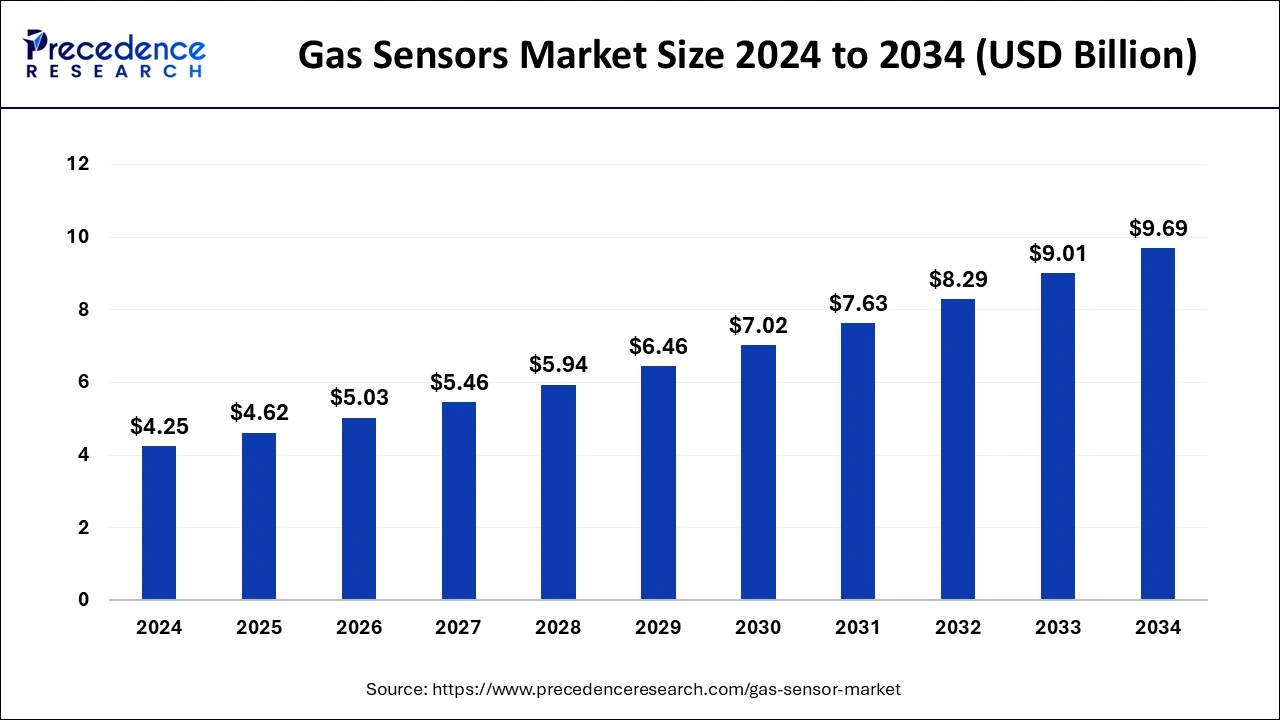
Integration of AI is enhancing the capabilities of gas sensors. AI has the ability to analyze and process sensor data effectively, which improves the accuracy of gas detection. It also identifies anomalies in gas sensors' data, helping detect possible faults. AI-powered gas sensors are crucial in weather monitoring. They can also enhance indoor air quality by monitoring and controlling pollution and humidity levels.
The Asia Pacific gas sensors market size was estimated at USD 1.50 billion in 2024 and is anticipated to be surpass around USD 3.55 billion by 2034, rising at a CAGR of 8.99% from 2025 to 2034.
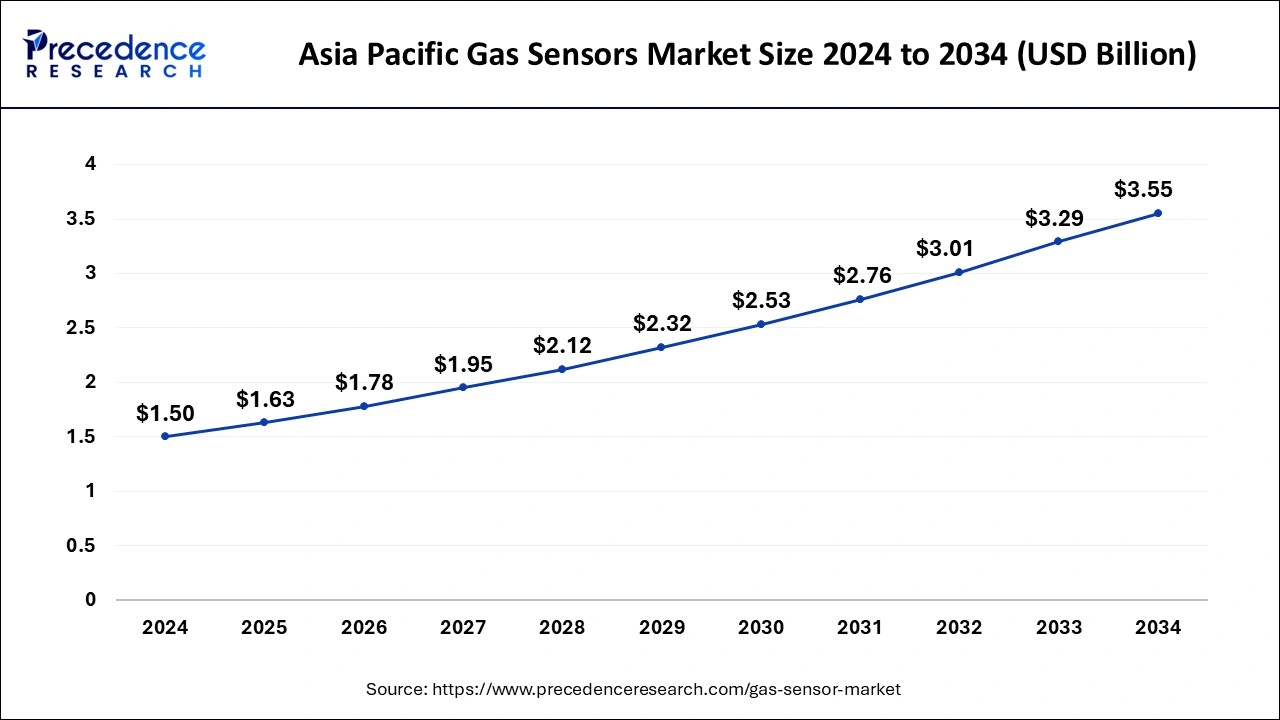
Asia Pacific region has dominated the segment as a result of its rapid urbanization and industrialization. The development of this region which is on a rise has increased the production of toxic gases in the environment. Growing demand for the air cleaners will also drive the growth of the Asia Pacific region for the gas sensors during the forecast period.
Asia pacific
North America is expected to expand at a solid CAGR during the forecast period.
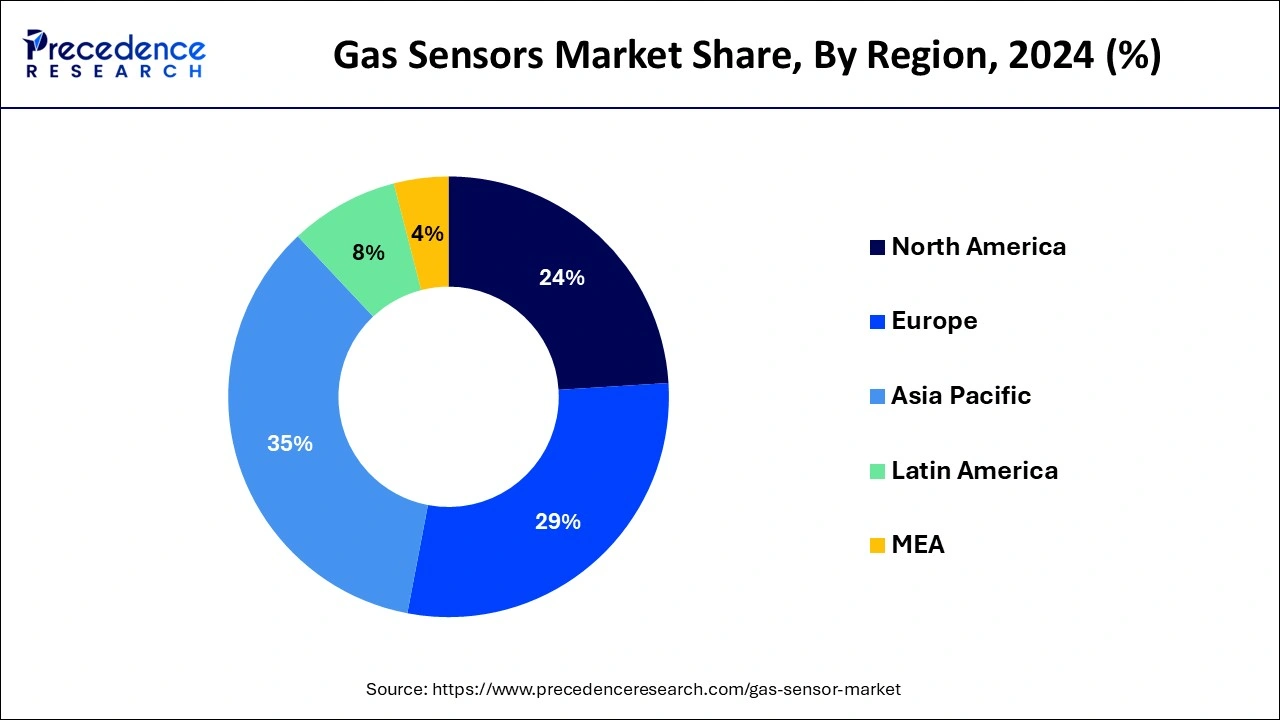
These are devices that help to detect the emissions of toxic gaseous substances into the atmosphere by the various gas producers such as industries, manufacturers, transport sector and the household sector. State government guidelines have been implemented regarding the release of toxic gases from the vehicles and the industries which prove to be a major factor for the global climate change and pollution full stop various harmful toxic gases are also release from the agricultural activities which results in climate change and pollution. Various types of gas sensors have been introduced into the market by the leading market players in order to reach the difficult sites where human being does not have access.
The size of the gas sensors is very small can be consorted and go narrow spaces which are out of human reach. The advance technology is which are used in the sensors help to detect toxic gas emissions from a far away distance without endangering the life of the operator. Wireless technology that are being used in the modern gas sensors helps to obtain relevant data and information regarding the toxic emissions from a safe distance without coming in contact with the handler. Segregation of the various toxic gases emitted is also important in order to put them to proper use and obtain maximum productivity. New technology is need to be developed in order to make secondary use of the toxic gases emitted so that the recycling process keeps continuing and the waste material that is emitted into the environment is minimum. The harmful gases emitted by the transport sector have also been kept under check by the government by imposing various rules and guidelines regarding the use of the vehicles. Main toxic gases which are released into the atmosphere prove to be a great risk for the birds and other aerial animals. This creates and ecological imbalance in the environment, thus endangering the global ecosystem and climate.
The occurrence of the pandemic had a significant impact over the gas sensors market. As a result of the constants and restricted movement which were imposed by the government worldwide, the amount of toxic gases released by the transport sector was negligible which helped to maintain bycological balance of the environment. The functioning of the industries and factories over also restricted in order to control the spread of infection and diseases which help to reduce the amount of gases released into the atmosphere. This had a negative impact on the gas sensors market as the demand had reduced due to the restricted functioning of the factories. Or number of small scale industries had to be shut down temporarily in order to avoid monetary losses which had a negative impact on the gas sensors market.
On the other hand, the toxic gases emitted from the hotel industry and the household sector was on a rise due to the constant combustion of fossil fuels and petroleum products in these departments. During the post lock down phase the movement of the people increased rapidly in order to deal with anxiety which was created due to the restricted movements. This had a negative impact on the environmental but proves to be a growing factor for the gas sensors market.
The development of wireless capabilities and miniaturization has proved to be a major driving factor for the growth of the market during the focus period. The advancements made in the communication technology which has been integrated with the modern devices and equipments in order to detect the toxic emissions help to promote the market to a great extent. This detection technique can be carried out from a safe distance without risking the life of the employee. Since it has wireless capabilities human intervention is minimum and the use of machines and technology has been considered to manage the entire process of detecting the toxic emissions. The miniature size of the devices helps them to penetrate into narrow spaces where the human body cannot reach and perform their actions. This enables the devices to perform the task with efficacy and precision. These devices are mainly put into use in order to detect the gas emissions from the industrial sectors and to keep a constant control over their toxic gas production.
The intensity at which the gas emissions take place or constantly monitor with the help of these devices. Industrial as well as domestic sectors are taken into consideration by this market. Rising demand for controlling in the climate change and pollution as a result of the emissions from the industrial sector has helped to show a considerable growth in the market. Smart devices are being developed by the manufacturers which sense gas emissions easily without errors. The constant research and development which are being carried out by the key market players helps to develop new advanced technologies in the market that support the objective of reducing the emissions of harmful gases into the environment.
Numerous companies are introducing drone based devices in order to detect the gas leaks from their industries in order to ensure better safety of their employees and also the handler of the pipelines. The strict rules and regulations laid down by the government regarding the toxic gas emissions from the industries and the gas emissions from the transport sector has helped to propel the demand for the gas sensors during the forecast period. The numerous gas emissions that have crowded that atmosphere prove to be a matter of concern for the environment. Use of methane which is greenhouse gas is highly toxic and inflammable. These guys can be explosive in the air if not controlled properly the gases such as carbon monoxide and carbon dioxide let out into atmosphere as waste materials which adversely alter the human health. Mithun gas is made use of in the power generation companies which helps to boost the market for the gas detection devices.
Specific gas detectors are developed by the leading market players in order to make the work easier. The use of modern technology to check the harmful gas emissions has boosted the demand for gas sensors technology. The development of the sensors in order to fulfill the rising demand from ventilator developers has helped to boost the supply for the gas sensors. A rapid growth in the industrialization in the developing countries has propelled the amount of toxic gas emissions in the atmosphere which has in-turn boosted the demand for the gas sensors in order to keep the emissions under control. These multiple reasons prove to be the growth factors for the gas sensors technology.
| Report Coverage | Details |
| Market Size in 2025 | USD 4.62 Billion |
| Market Size by 2034 | USD 9.69 Billion |
| Growth Rate from 2025 to 2034 | CAGR of 8.59% |
| Largest Market | Asia Pacific |
| Base Year | 2024 |
| Forecast Period | 2025 to 2034 |
| Segments Covered | By Type, By Product, By Technology, By Output Type, and By End User |
| Regions Covered | North America, Europe, Asia-Pacific, Latin America, and Middle East & Africa |
The wired segment has held the highest market share of 57% in 2024. Various type of benefits were offered by the biot type of sensors such as loan maintenance cost which helps the small scale industries to generate a better revenue return. The reliability of the wire sensor system is better as compared to the wireless ones. The compact size of the devices helps to function better. The cost of the wire type of devices was quite low as compared to the wireless ones. The accuracy and precision which was offered by the wire devices and sensors were also a beneficial factor for the industries. Loss of connectivity and signal becomes a great challenge where the wireless devices suffer the most.
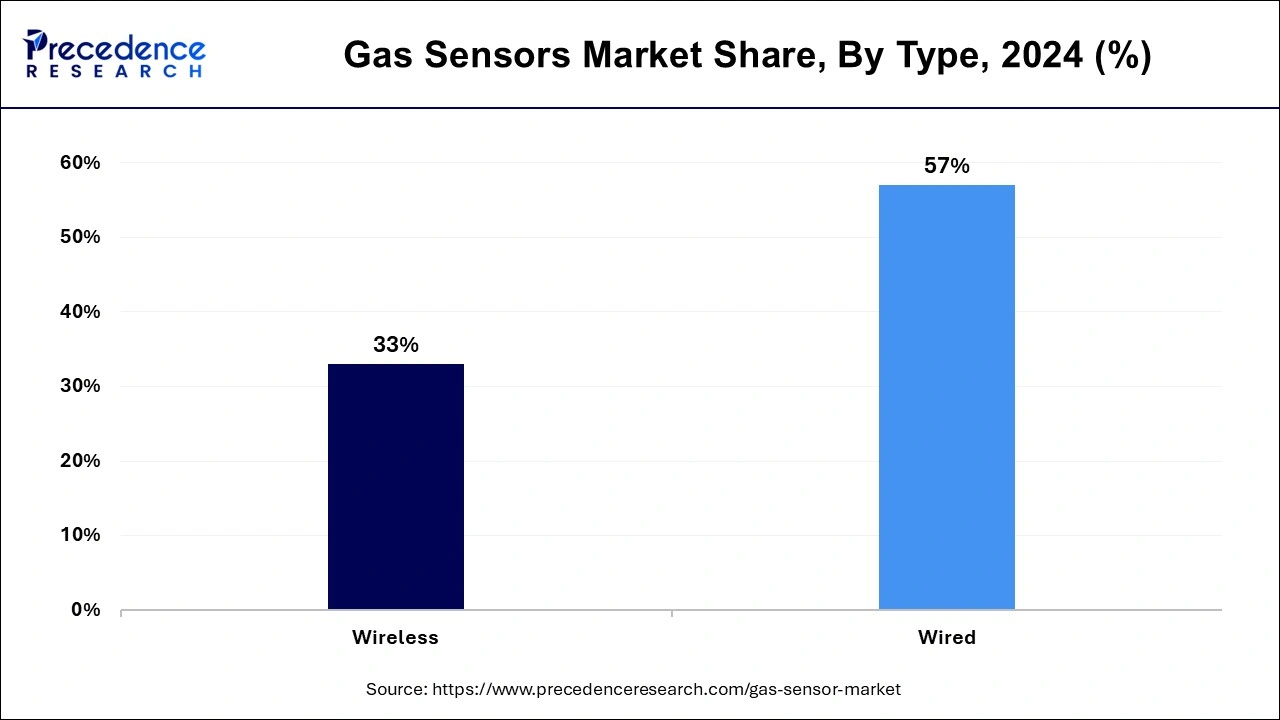
On the other hand, the wired glass sensors prove to be up great help when connectivity is concern. Disadvantage is a great use in receiving data and information from the mines and nuclear power plants. Whereas, the benefits obtained by the wireless devices were unavoidable. High flexibility and scalability were the key features of the wireless devices. These wireless gas sensors are highly portable which make them easily accessible even in narrow spaces.
The electrochemical segment accounted for the major market share of 24% in 2024. This technology consumers less power as compared to the others and has safer operations for a particular targeted type of gas. The method of oxidation is made use of in order to target a specific type of gas which helps them to provide accurate results. The electrodes that are used in the electrochemical technology help to detect the target gas.
The mining sector makes use of this technology to operate extend in order to protect the workers from being exposed to a harmful variety of toxic gas. Infrared technology is very efficient for protection of a particular variety of gas. The infrared variety of technology has been considered to deliver the fastest growth on account of its flexibility and variability.
The industrial segment captured the biggest market share of 22% in 2024. The huge amount of various types of gases which are emitted by the industries creates an alarming situation which is kept under check with the help of gas sensors. A number of manufacturers are completing in the market in order to develop a miniature gas sensor for the industrial sector. Small sized gas sensors with high performance considered which are reliable as much as the bigger machines.
The petrochemical sector is projected to show a substantial growth as a result of its high demand in the market. The gases released by the sector need to be kept under check conceptually during the production transportation and storage processes. A great emphasis has been made regarding the security and safety regulations for this particular sector owing to its high inflammable properties.
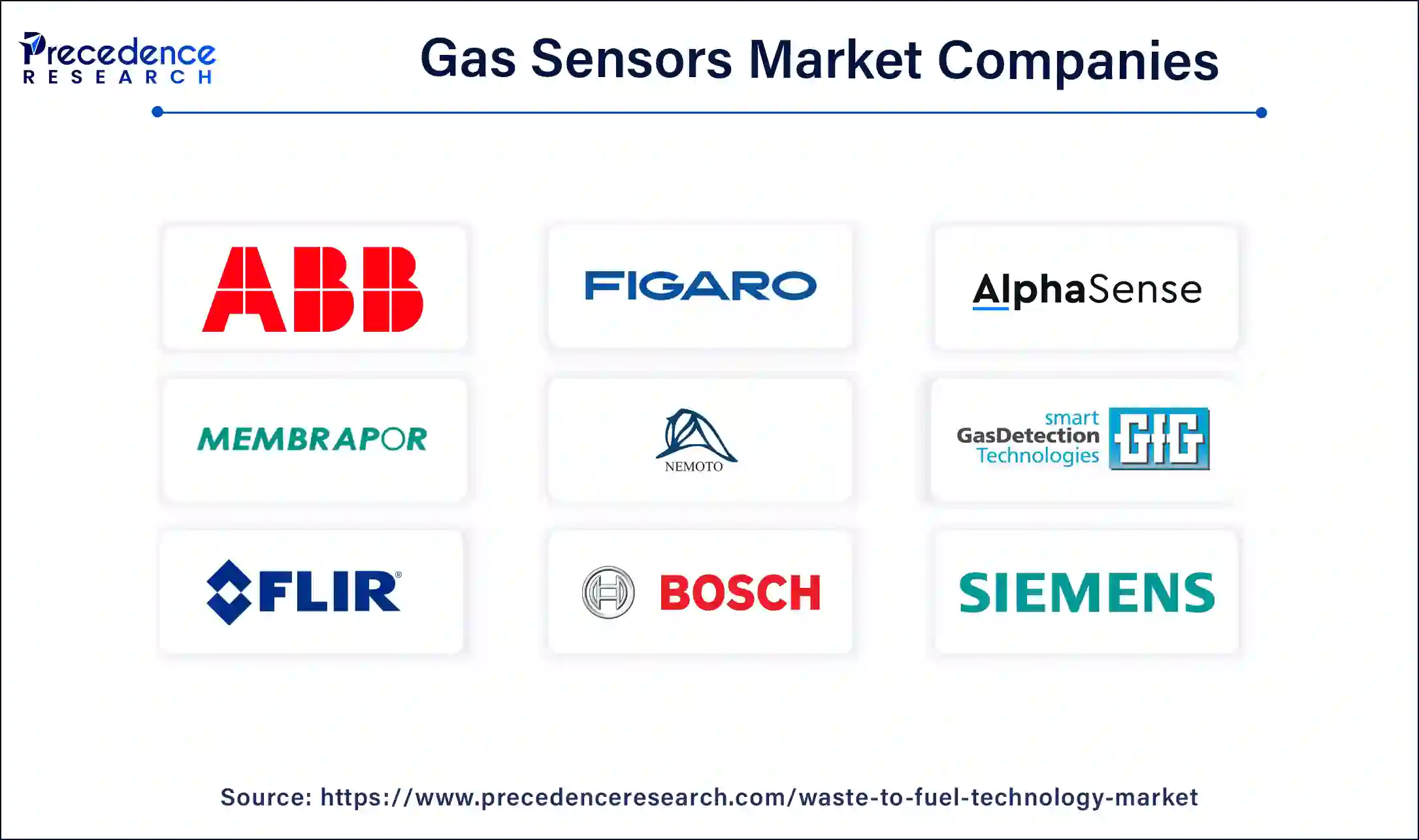
By Type
By Product
By Technology
By Output Type
By End User
By Geography
For inquiries regarding discounts, bulk purchases, or customization requests, please contact us at sales@precedenceresearch.com
No cookie-cutter, only authentic analysis – take the 1st step to become a Precedence Research client
March 2025
July 2024
November 2024
December 2024